Valencia Cathedral is one of the city's main attractions: I would categorise it as being a 'must-see' when you come to visit this beautiful city. The cathedral is located right in the heart of the historic city centre, very close to Plaça de la Reina (Plaza de la Reina, in Spanish). It has that name because it's the best way of identifying the cathedral itself, as being in the city centre can end up being a little confusing for tourists with the layout of the streets. However, if you ask for the Plaça de la Reina, it's very much likely that everyone can help you with directions so that you can get there problem-free.
An important topic to consider is that many of the names of museums, rivers, streets, and information about some traffic signs in Valencia can be found written in Catalan. This is due to the fact that two languages are spoken in Valencia, Castilian and Catalan (Valencian), the latter being considered as the official language. Lots of the people that live in Valencia usually learn both languages from a young age, although unlike Barcelona, people in Valencia don't usually get annoyed with those who decide to speak Castilian instead of Catalan (they are more relaxed in this sense). So, don't worry if you don't know Catalan, as you will find lots of road signs in Castilian. And, although Catalan seems to be, it's not as difficult to understand as you may think; it seems like a mix of Portuguese and Spanish to me.
Where does the cathedral's name come from?
The official name of the cathedral, in English, is: The Metropolitan Cathedral-Basilica of the Assumption of Our Lady of Valencia, but that name is normally shortened to just "Valencia Cathedral", or the "Holy Chalice Cathedral". Having said that, of course I couldn't forget its name in Valencian (Catalan), where it is commonly known as "La Seu", which, in English, means "headquarters". Why is it called headquarters, you may ask? It's called that because this cathedral is so important that it is actually the headquarters of the archbishopric of Valencia.
Historical importance
Valencia Cathedral was the first to be created in the city, in fact, it is estimated that its construction took place in 1262. Just imagine how important it is to have a such a well-preserved cathedral nowadays, despite taking almost 800 years to be fully built.
Bishop Fray Andrés de Albalat was a key part of the church's construction, as it was he who placed the first stone before many others followed suit, until the cathedral's first nave was formed.
Another key individual in the construction of the cathedral was James I of Aragon, as he founded the Kingdom of Valencia and, therefore, the Christian Kingdom of Valencia, which allowed for the arrival of settlers from the Region of Aragon to the city.
Touring the cathedral
Scale model of the cathedral
The cathedral is located on the corner of the Plaça de la Reina and extends through the adjacent streets to the square, which, at first sight, doesn't allow you to see its true size. It's of great help looking at the scale model of the cathedral located outside of the building itself. This model is really representative of the cathedral's structure and of how the several naves found there are distributed; I really recommend that you take a look before entering the cathedral.
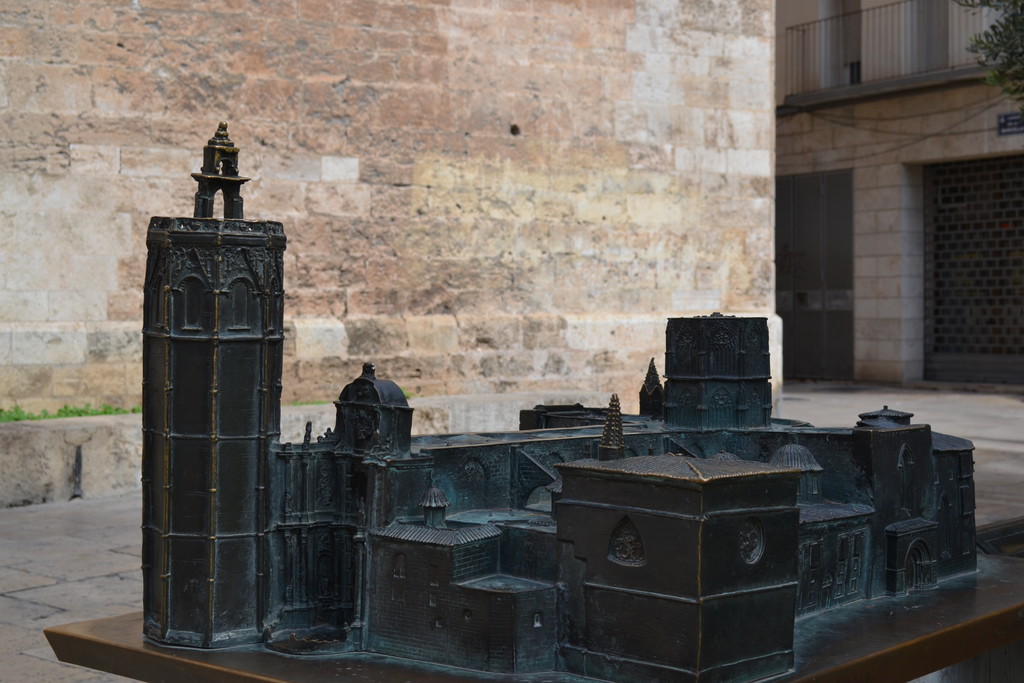
This cathedral is highly important, as it is protected and worship is offered in the "Holy Chalice" chapel, otherwise known as the "Holy Grail", which they explained to us as having been handed over to the cathedral by King Alfonso the Magnanimous in 1436. This fact really impressed me because the fact of having this very precious object in Valencia and knowing that, according to the Gospel, this cup or chalice was the one used by Jesus during the Last Supper, which is really striking. However, there is a lot of scepticism surrounding the validity and truth of this 'fact' and whether it is the true, sacred relic or the authentic "Holy Grail". In fact, when Pope John Paul II visited the cathedral in November 1982, and later Pope Benedict XVI in 2006, they both used this sacred cup during their Eucharist services.
The cathedral's facade
At first sight, the cathedral's facade reminded me of the architectural style of the churches and monuments in Salamanca, due to the orange-gold colour of its exterior, it would seem like it was built with freestone from Villamayor, a province in Salamanca. For me, the surprise was that it was built with stones that were imported; however, they weren't from Salamanca, but rather from other municipalities located close to the capital.
First door: La Porta dels Ferros
Looking at the cathedral from the Plaça de la Reina, the first door that you will see is the Porta dels Ferros, which gives the general public access to the cathedral's first nave. This entrance is located next to the Micalet tower. It's very important to notice the architectural detailing on this structure, as they are so small that you could be looking for them for hours without getting bored.
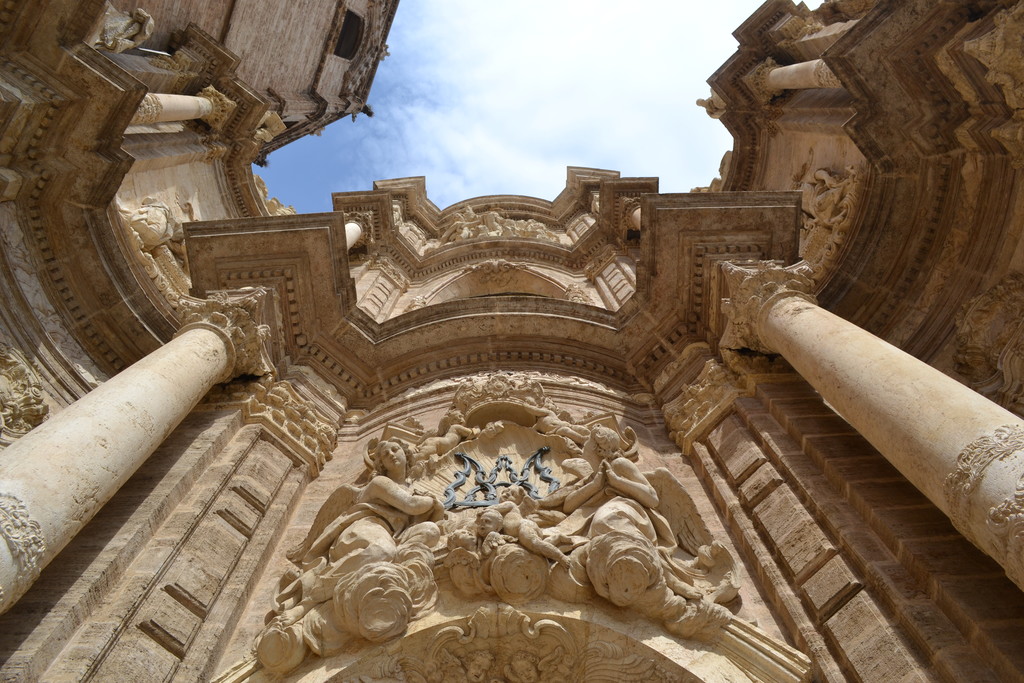
Out of all the facades, this is the most "modern", but even still, it is old, as it is more than thirty years old. One of the things that's most enjoyable about looking at the cathedral is seeing the combination of architectural styles, as its construction process has taken several years, as well as many architects of different nationalities who incorporated their own style into the facades that they were in charge of.
This door stands out for its Baroque style, although, in photos, you cannot fully appreciate its true height; you must bear in mind that it measures almost 40m tall.
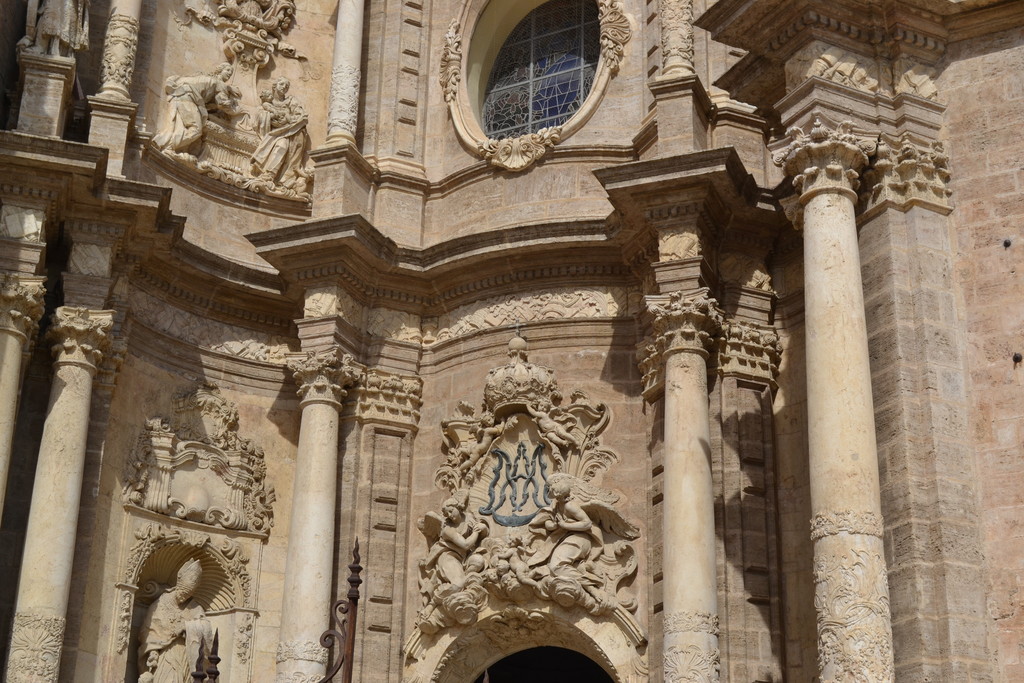
Access to the cathedral through this door is restricted by a railing that's not of the same style, but once through it, you will be able to appreciate these details that I've talked to you about. The facade is made up of several medallions and emblems: for example, there are medallions from Pope Calixto III and Alexander VI, as well as an emblem of the Virgin Mary and several drawings on the stone, making it very easy to get lost in the detailing.
Access to the central nave
The predominant style of the cathedral is Valencian Gothic, which is seen as a primitive style, as being the first cathedral in Valencia of this style, one could say that what we have now come to know as 'Valencian Gothic' was born with its construction. This central nave is more than half a century old, and they have added more to the sides of the cathedral. It's important to remember that the most difficult thing was maintaining the original style after many architects in charge wanted to conceal it, focusing instead on the Baroque or Neoclassical styles.
One of the things that impressed me the most was the height of the naves, as, from the outside, it would seem like the church isn't actually so big. It's important to emphasise the thickness of the pillars and the height of the vaults, despite them lacking the detail that looks really pretty when lit up.
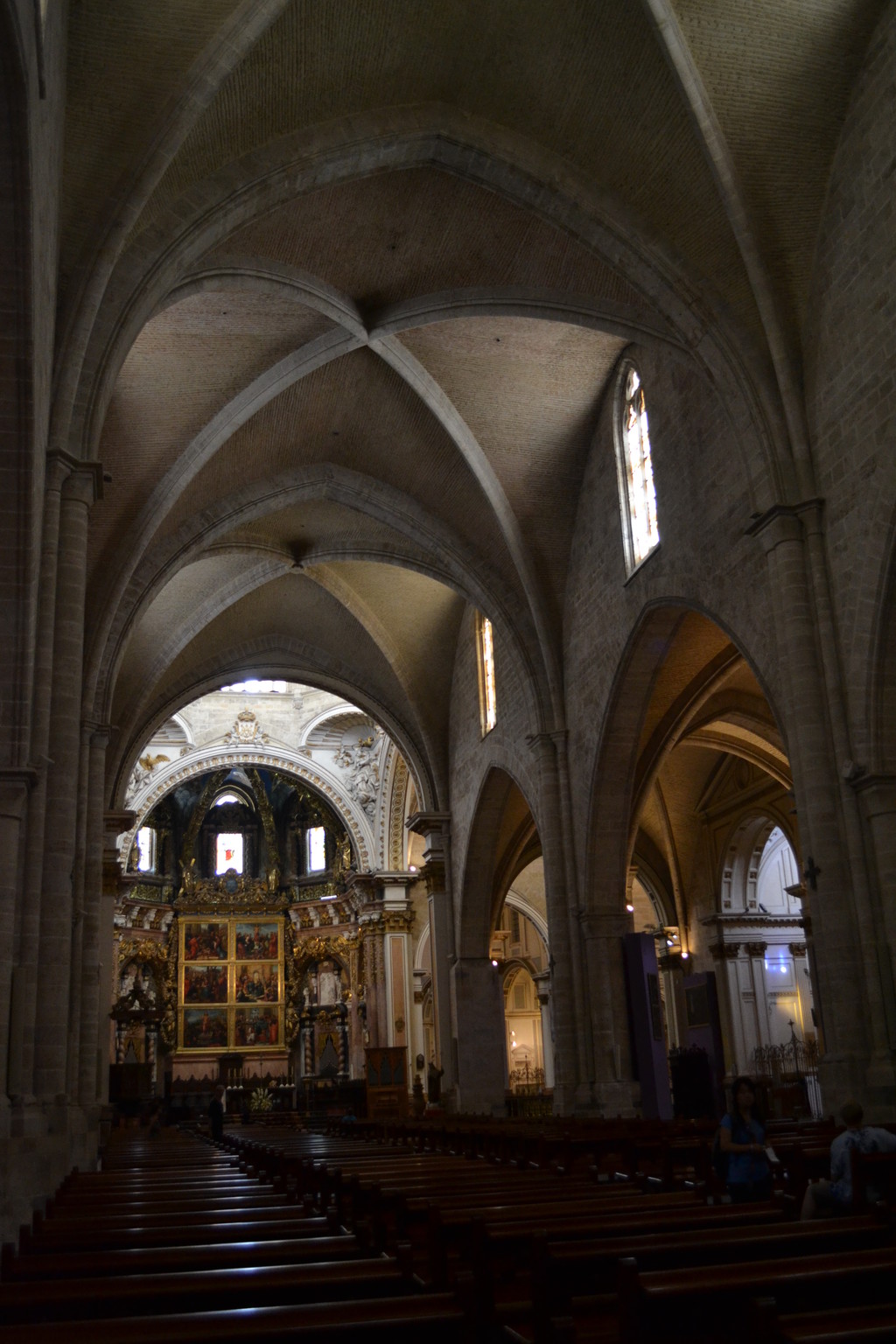
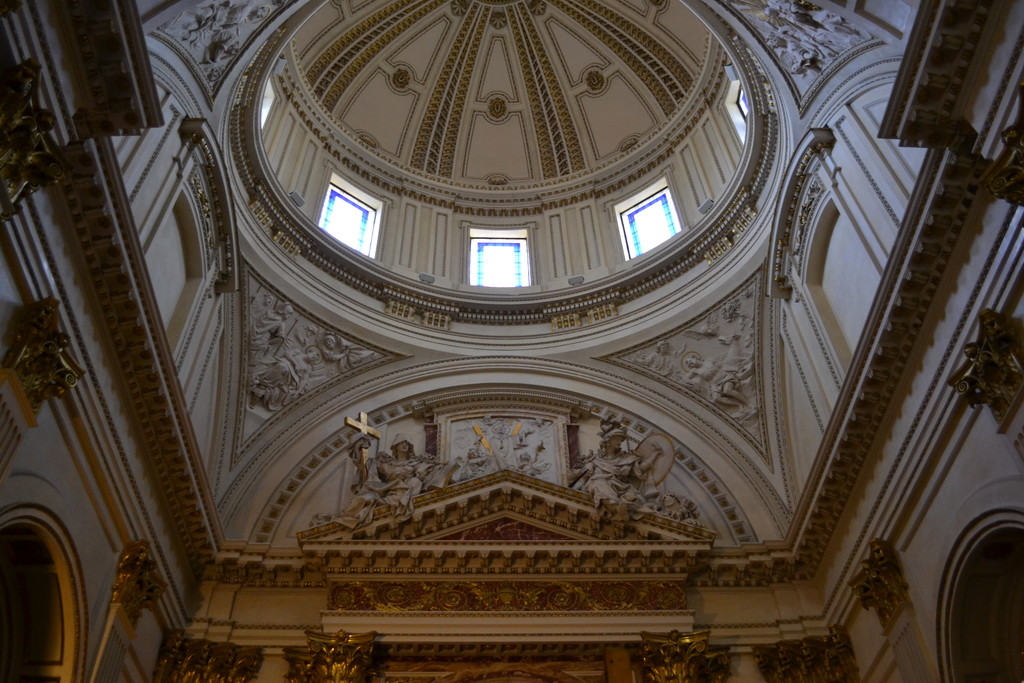
Micalet
It's impossible not to see the bell tower, the Micalet, when looking at the Porta dels Ferros, as it immediately stands out for its sheer height. At the base, an inscription engraved to commemorate its over 50 metre tall construction can be found. It's possible to access it if the entry fee is paid, but you will have to take into account that you must climb 200 stairs to get to the bell ringing chamber, which is at the same height as the large windows that you can see from street level. From above, the view is usually spectacular for seeing the Plaça de la Reina and the rest of the facade.
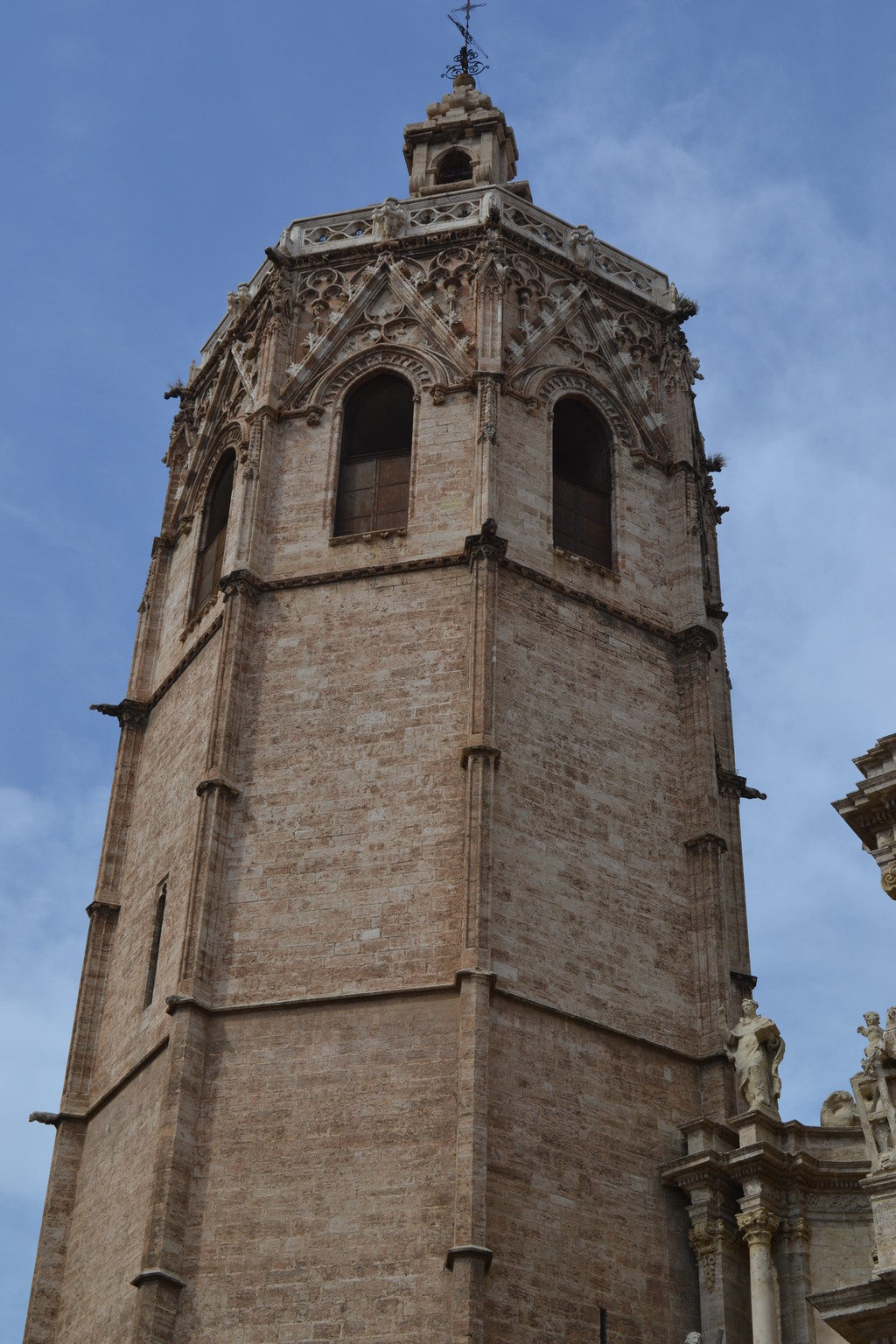
Porta dels Palau
I found myself with my friend who is doing her exchange here in Valencia, and we were searching for the cathedral. I found a very pretty door in Plaça de l'Almoina and I took a photo of it, but it didn't occur to me that the facade also formed part of the cathedral's structure. It's really difficult to visualise exactly how big it is because there's not just one door; the distribution of all of them gives rise to many squares or patios that one would think aren't as necessarily important. We still took around five minutes to get to the Porta dels Ferros after passing by here, with a couple of streets still to walk through.
This door has a very different style both to the central nave and to the facade on the Porta dels Ferros, due to the fact that this is the oldest of all the doors, and, as I mentioned earlier, their construction was carried out by different people. On this door, in particular, the Romanesque style stands out, and is almost 800 years old.
You can see that, in the stone itself, there are fourteen sculpted heads interspersed by gender (male-female, etc. ) and this makes reference to the settlers who brought young, unmarried women from Lleida to marry the soldiers. Although you cannot see this very well in the photos, amongst the women, there are some of the names of those who married.
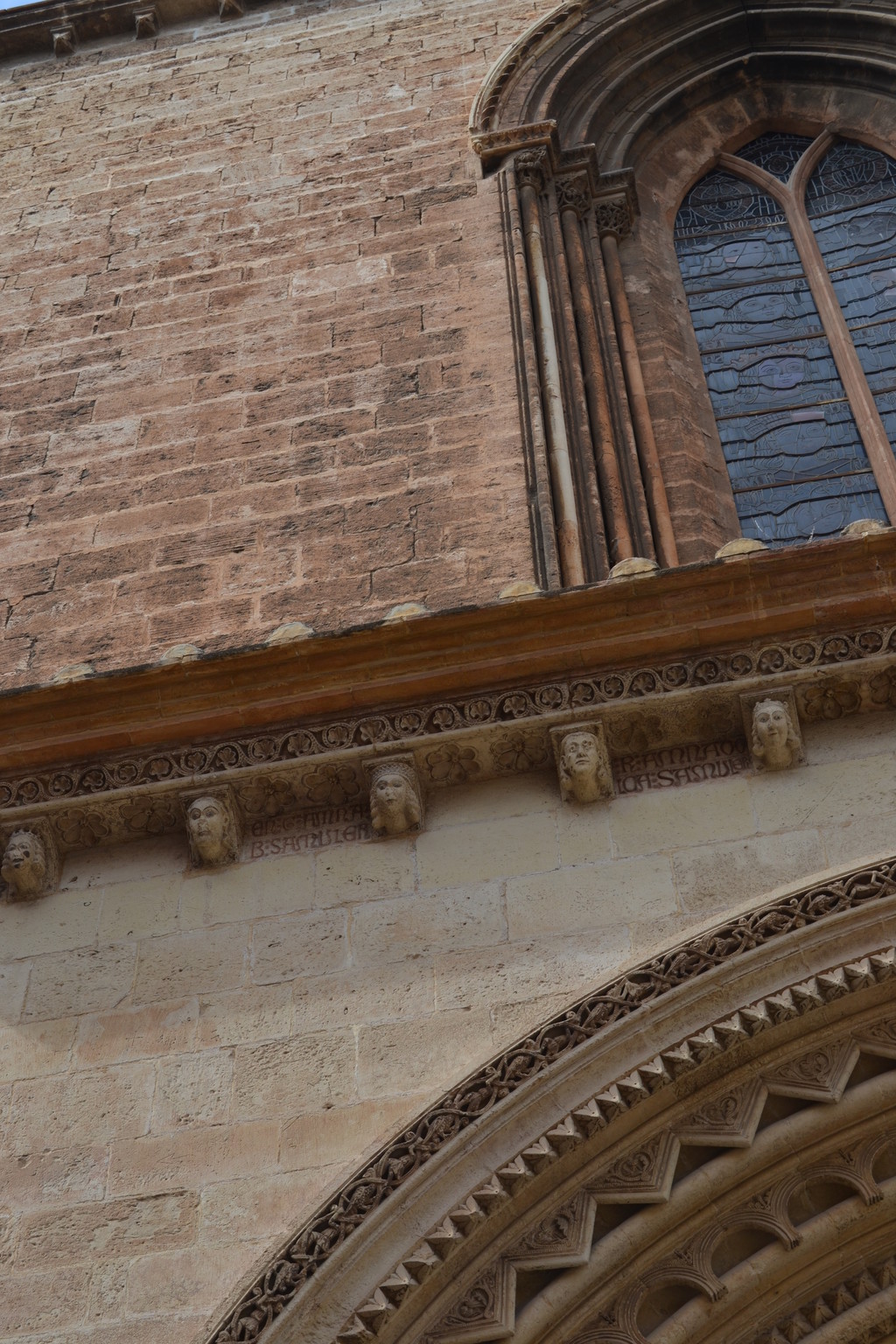
Around the door (you can appreciate that it is very old), there are some columns that are sticking out from each other, each being very different in style in terms of the inscriptions and medallions that the other doors had.
Porta dels Apostols
This door is located in a completely different section to the others, as it is situated in the Plaça de la Verge, and the same thing happened to me here as it did at the Porta dels Palau: once I had visited the central nave, I carried on along Carrer de Micalet and arrived at the Plaça de la Verge, where I found another very pretty door that belonged to the Basílica de la Mare de Déu dels Desemparats, located next to Valencia Cathedral.
This door owes its name to the Star of David found above the door, where you will be able to see the statues of the twelve apostles on its exterior facade, which is in keeping with the Gothic style that the majority of the cathedral has. This particular door is the "sandwich", with it neither being the most modern, nor the oldest. It is known that its construction was completed in 1354, which makes it more than 700 years old. However, don't think that such old, original sculptures are the ones that are on display outside, these are just replicas to save the originals from degradation with it being the door that has needed the most restoration work.
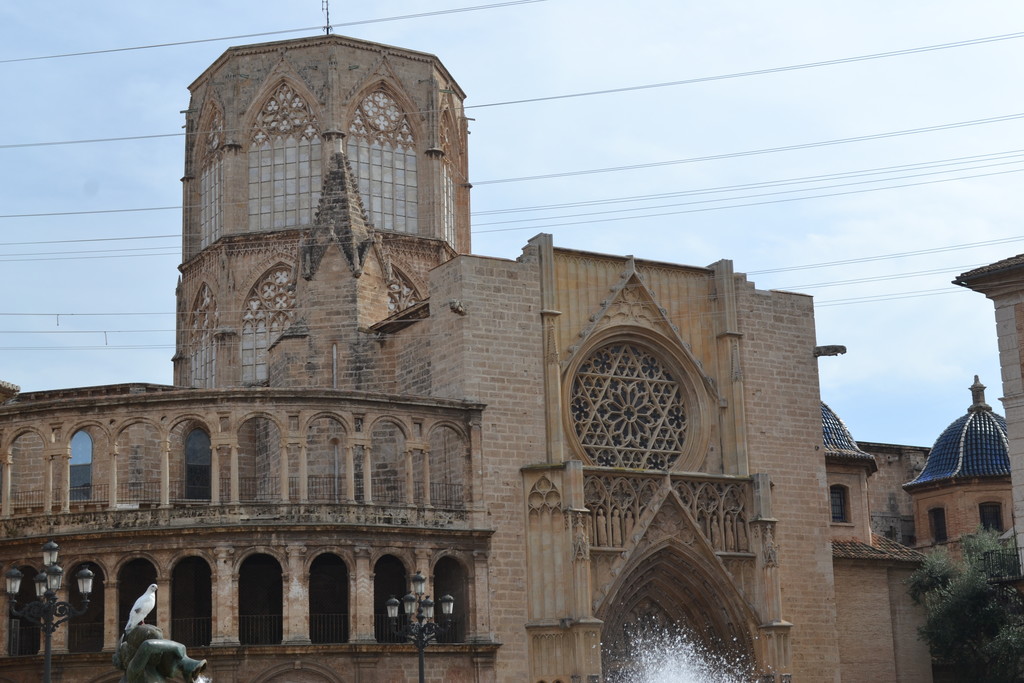
This door has gained enormous historic value because, every Thursday for over a thousand years, the Water Tribunal has met here (one of the oldest in the world), which makes decisions about the use of irrigation water, in a way that makes for a fair distribution. I never would have imagined that a tradition like this of meeting every Thursday would still be going a millennium later... interesting, don't you think?
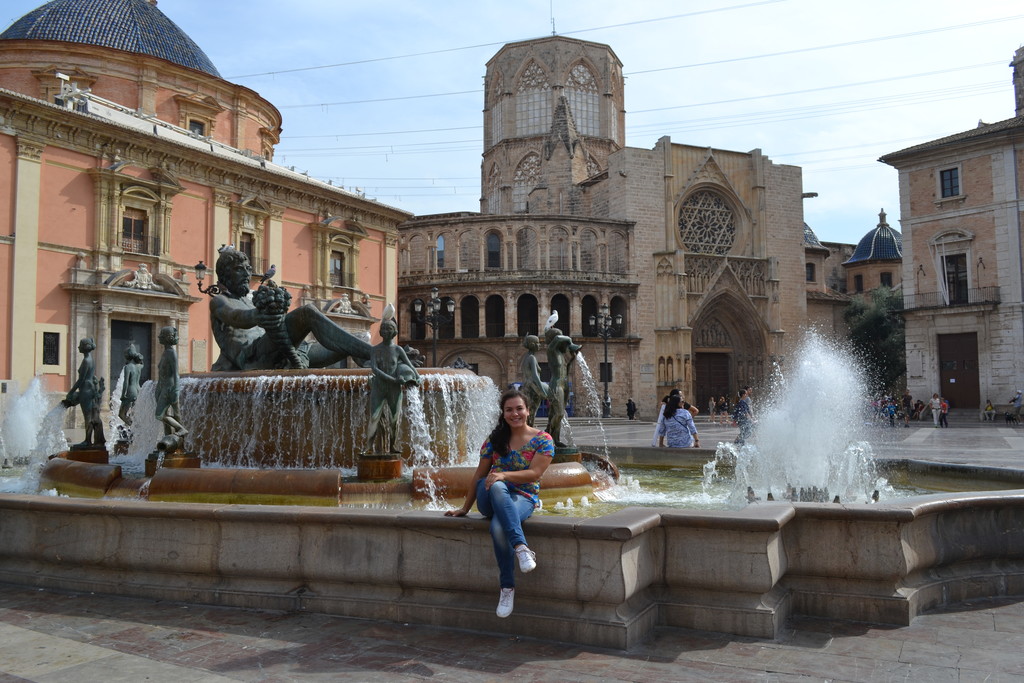
The previous photograph was taken from the Plaça de la Verge, seated in front of the famous Font al riu Túria, which is said to have been built in its honour. The sculpture is made of bronze for the most part, and there is a man in the centre of it representing the Turia River and eight naked women who represent the river's eight irrigation channels.
Tour of the Cathedral's interior (museum)
Despite the Catholic Church not considering the cathedral itself as a "museum", if an entry fee is applied and charged, the general public has the opportunity to appreciate some antiques that have been conserved and also to access other areas; for this, there are both guides and audio guides available in several languages. If you decide to take the tour, you will have access to: the thirty chapels, the cupola, the chapter house, the reliquary, the Museu Catedralici i Diocesà de València, the vestry, and, the most important of all, the Micalet bell tower.
What are the opening hours?
The part of the cathedral that is open to the public (for worship) has the following opening hours:
- From Monday to Saturday, 10am-6pm.
- Sundays and public holidays, 2pm-6:30pm.
(Bear in mind that from November to March, the cathedral closes one hour earlier. )
To enter the museum:
The museum follows the same opening hours, except for Sundays when it is closed.
How much does entry cost?
Access to the central nave is free, as it forms part of the area where Christian worships are held. If you want to take a guided tour, which are highly recommendable, standard entry will cost you 5€, but if you come in a group, the price will be discounted to 3. 30€. If you bring children (up to 12 years old), they will benefit from the reduced price of 3. 50€.
How do you get there?
The best way to get around in Valencia is on foot, especially if you want to really see the city centre, as some streets are only accessible to pedestrians or cyclists. If you want to travel around the city by bike, I recommend using the "Valenbisi" bike renting system: it's very fast, environmentally-friendly, and safe. I used one of the bikes to get to the cathedral and I found two stations to leave and pick up the bike in the vicinity.
You must also know that Valencia also has a metro system, which means that you can travel from pretty much any point in the city to either Colón or Alameda stations, which are the closest to the cathedral, although, you must bear in mind that you have to walk for around 10-15 minutes from the stations to get there.
To get there by bus, you can take lines 4 or 32 and alight at the City Hall stop, which will appear as "PL. DE L'AJUNTAMENT", and from there, you'll have to walk the rest of the way because not one bus passes directly by the cathedral.
In order to know exactly which street to arrive at, it will depend on which door you want to start at first: remember that the Porta del Ferros and the Micalet are located in Plaça de la Reina, whereas the Porta dels Palau is located in Plaça de l'Almoina and the Porta dels Apostols are located in the Plaça de la Verge.
Directions to get to the Plaça de la Reina from the Plaça de l'Ajuntament:
Follow the street through the Plaça de l'Ajuntament before turning right at the first fork in the road (level with Telepizza) towards the street Plaça de la Reina. If you carry straight on, you will find the cathedral.
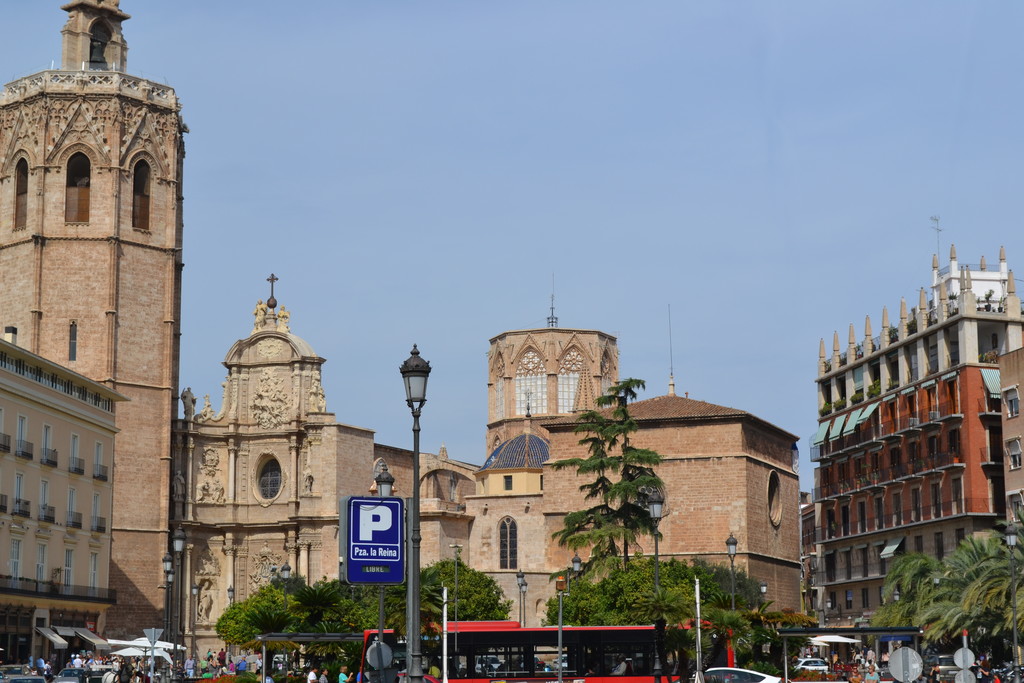
(View of the cathedral from the Plaça de la Reina: it's true that it doesn't look as big as it really is, right? )
Recommendations
- Explore the cathedral's surroundings, passing through the three aforementioned squares, and take a look at each of the entrances that form part of the cathedral.
 What to see Valencia,
Valencia,
Spain
What to see Valencia,
Valencia,
Spain


































